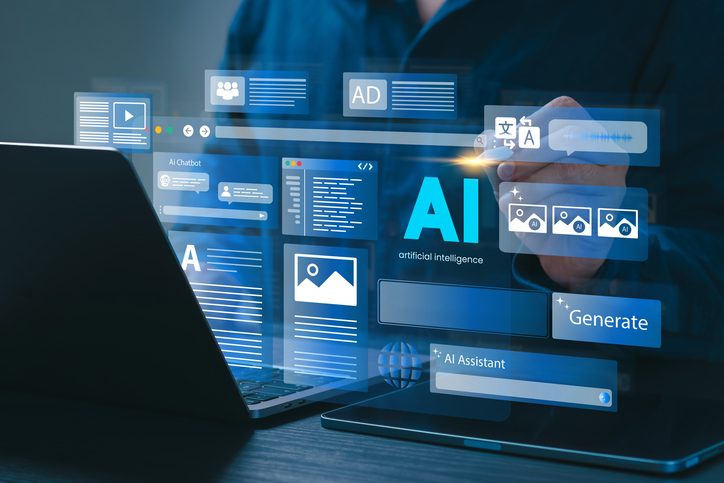How to Optimize AI-Generated Content for Better Search Visibility?

AI-generated material has turned into a useful instrument for companies, marketers, and producers who need the generation of quality articles, blogs, and web copy in bulk. Whereas the application of AI may deliver content at a high rate, it is not enough to post such content to gain popularity on the internet.
The areas of content, which remain relevant to search engines, are originality, usefulness, and visibility optimization. The AI-generated content must be enhanced, refined, and optimized to fit the criteria of search engines to be original in the overcrowded digital space. The next section is a guide to the maximization of AI-generated content to achieve better results in search.
1. Refine and Edit to Human Touch.
The content should be generated with the purpose and the intended audience in mind. Google values content that satisfies the user intent, whether it is informational content, navigational content, or transactional content. The content generated by AI can be done within a rather short time, but without appropriate instructions, it can be generic or irrelevant.
The first step is to use the keyword search and map the points of interest, and also ensure that your artificial intelligence software is able to generate content which are relevant to your interest in using the chosen keyword. This is so as to ensure that there is a real direction of the content, and more chances of ranking.
2. Ensure Originality and Avoid Duplication
Contracts that are written by AI are mechanized or too formal. On the one hand, they offer a good foundation but tend to be less emotional, less narrative, and less creative in engaging readers. The AI draft could be edited to include an example, case study, or anecdotes, and then it will be more relatable.
The search engines also prefer to rank articles that make the users stay longer, which is achieved by their natural flow and humanized manner. Polishing the draft is important so that your content appeals to the algorithms and the readers.
3. Optimize for On-Page SEO
The search engine can be optimally structured for AI-generated content using the correct on-page SEO measures:
- Headings (H1, H2, H3): Subdivide content into subheadings with keywords.
- Location of Keywords: Use the primary and secondary keywords naturally and not stuff.
- Internal Linking: Find connectivity of the article with other related pages on your website.
- Meta Tags: Use some good meta titles and descriptions to increase your click-through levels.
- Alt Text: These are images that have been optimized with descriptive alt attributes.
These methods will make the content more accessible and rankable by search engines.
4. Optimize, Not Create With AI.
Artificial intelligence must not only produce content, but also help to optimize it. A lot of contemporary tools evaluate the readability, the density of the keywords, and the content of the competitors.
As an example, an AI visibility tracking tool can assist in tracking the success of the AI-generated articles in the search results, detecting issues, and recommending them. This guarantees that optimization is a continuous process and not a one-time affair.
5. Make it More Than Superficial
AI tools are also very good at generating an outline or summarizing general knowledge, whereas search engines are more focused on detailed, credible information. Add more analysis, quotes of experts, statistics, or personal views to optimize AI drafts.
In case AI comes up with a simple explanation, you can elaborate on it with examples or steps to take. This will make your content stand out among other AI-based articles and make it a reliable source.
6. Integrate E-E-A-T Principles.
Google has rules, and these rules are also focused on Experience, Expertise, Authoritativeness, and Trustworthiness (E-E-A-T). To achieve these aspects, AI cannot do everything, and you can enhance the content credibility by adding:
- Biography of authors and qualifications.
- Citations of original studies or credible statistics.
- Factual and fact-verified information.
With human knowledge superimposed on the AI-text, you establish credibility with both the search engines and your audience.
7. AI and Human Innovations
AI efficiency and human creativity are the key to the future of content. AI performs monotonous tasks, such as the creation of outlines, summarization, or proposed keywords. Man is a source of creativity, imagination, and experience.
Writing optimized and authoritative content that performs well in the search results and at the same time preserving its authenticity, is possible by mixing the two.
Conclusion
AI-created content is of immense potential; however, optimization is necessary to access its full benefits in the search results. Editing and originality, applying best@ practices of SEO, and monitoring results; each of these steps is important in gaining visibility.
Having AI and human creativity coupled with strategic editing will help companies generate content not only to rank but also to captivate readers. The trick will be to make good use of AI as search engines keep becoming more advanced as time goes by, including making it easy to understand, authoritative, and relevant.
